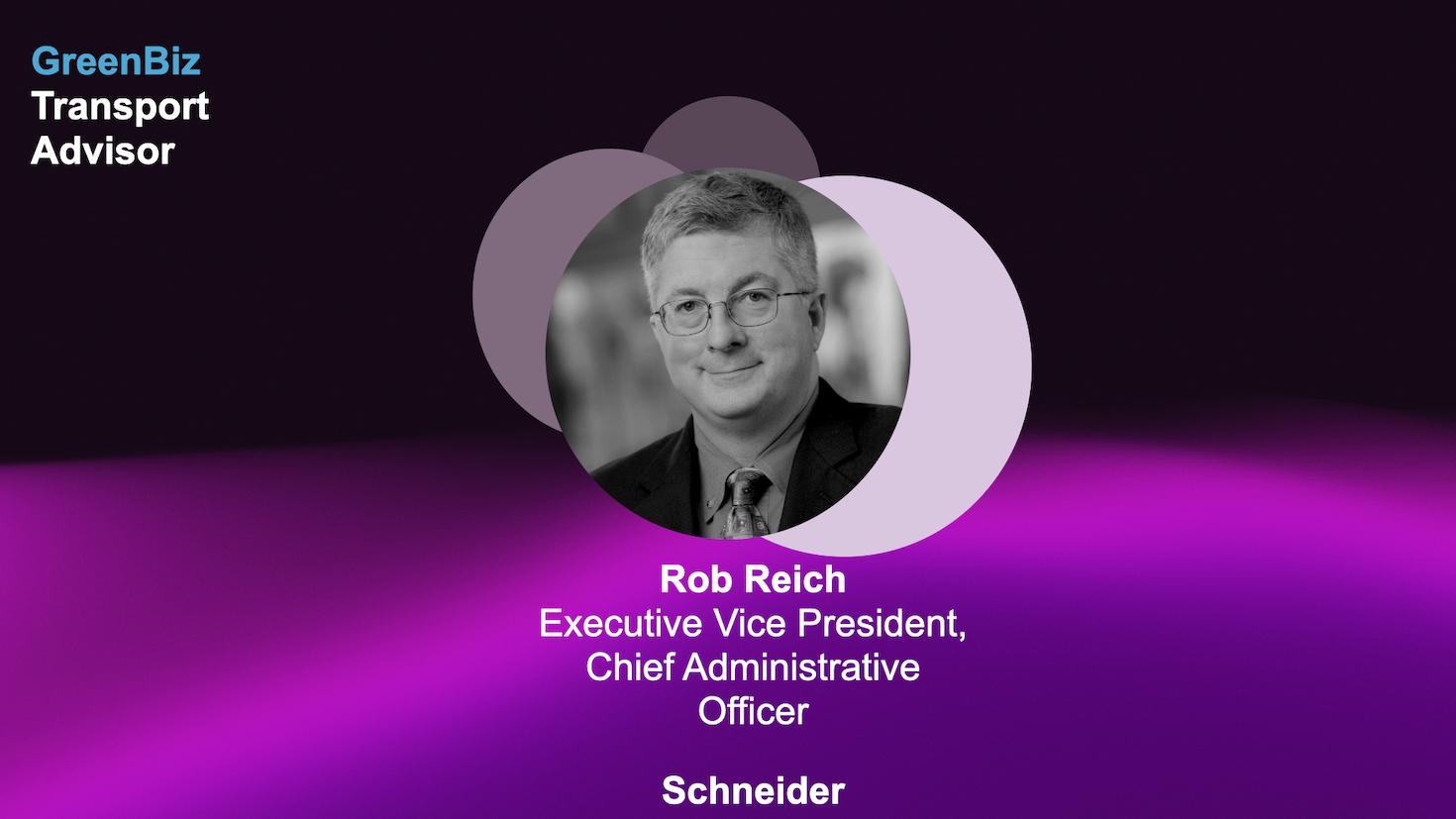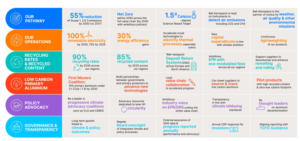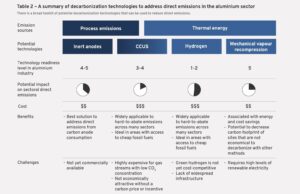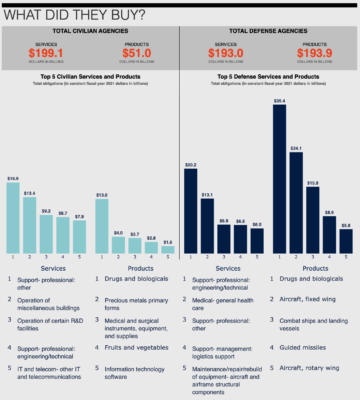I asked several members of the GreenBiz Transport Advisors, a group of industry leaders who provide guidance and insights to support our work, to reflect on the following issues:
-
What has been transformational in your work/industry this year that has inspired you or renewed your commitment to helping address climate change?
-
What is one challenge facing your industry, and what is one thing you and your team are doing to address that challenge that others should also do?
Tesla’s Noelani Derrickson, Prologis’ Ramya Winstead, Schneider’s Rob Reich, EVHybridNoire’s Dr. Shelley Francis and the Aspen Institute’s Ingrid Irigoyen shared their perspectives. Here are their written responses:
Noelani Derrickson, Tesla
Senior Policy Advisor, North America Policy and Business Development

The biggest and most exciting transformation this year were the announcements from most major automakers to adopt the North America Charging Standard (NACS) in future electric vehicle (EV) models. It signals industry maturity to have, in the very near-term, almost all the EV automakers align on a single charging connector standard. The NACS connector can be used not only for fast charging, but also for lower-power AC charging, and is rated up to 1 megawatt, so it could be considered in charging applications beyond light-duty vehicles. From a consumer perspective, this transformation in the EV industry is, in some ways, the equivalent to the current alignment around the USB-C connector for smaller electronic devices.
One major challenge in electrifying transportation is access to EV charging in apartments and multi-unit dwellings. The ideal outcome is for each unit in a multi-unit dwelling to have access to a dedicated EV charger. However, these buildings are often the most challenging and costly to retrofit with EV charging, while also being the most important to unlock to ensure equitable access to the benefits of EVs. Unfortunately, there is no silver bullet EV charging solution for all multi-unit dwellings. One important area we have been working on as a team is advancing national, state, and local building code adoptions that require parking facilities in new multi-family buildings to include panel sizing and raceway for a percentage of spaces in order to reduce the cost of adding future EV charging.
Ramya Winstead, Prologis
Director, Global Mobility Products

“The vehicles are here!” Medium and heavy-duty electric trucks showed up in a big way this year. They proved their on-road capabilities (as seen on NACFE’s Run on Less) and are now well positioned to focus on areas that will increase vehicle adoption with fleet owners. While access to reliable charging infrastructure continues to be a top concern of fleet owners, it has been exciting to see infrastructure developers produce innovative solutions across technologies, industry partnerships, and business models to overcome the barriers that exist and address customer pain points. This industry is complex in its interdependencies — without vehicles, there is no infrastructure. Without working with utilities, regional municipalities, and planning agencies, you can’t get the infrastructure built. Collaboration and coming together with a diverse set of stakeholders to discuss and ideate on pragmatic ways to build the transportation network of the future is critical. We’re seeing these conversations taking place at every level (federal, state, local) across sectors (public, private). This is key to unlocking an equitable, distributed, and accessible charging network in the years to come!
There is a mismatch between when the EVs are available and how long it typically takes to install charging infrastructure. Fleet owners are looking for easy and flexible access to charging infrastructure with no upfront capital costs on very short timelines that align with their EV purchases. Here at Prologis Mobility, which is a part of Prologis, a global logistics real estate company, we meet these customer needs by taking a full-service approach to fleet electrification so that we are all successful in this adventure! Our approach is to help our customers electrify their fleets when it’s the right time for them. Our thesis is that fleets charge where it makes sense — and that in many cases are end nodes. This means fleet charging happens mostly at locations where vehicles are domiciled and some of it on-the-go. We offer a very simple charging-as-a-service subscription model to charge EVs at Prologis and third-party owned facilities, in addition to publicly accessible locations for dedicated (or reservation-based) charging. These chargers are in industrial clusters that are highly traversed by commercial light-, medium- and heavy-duty fleets. We also provide subscription-based OnDemand Charging solutions that enable EV charging until power from the utility is available at the site, or for back-up power, or to top-off EVs at their domiciled locations so they can go out on route the next day. We provide a holistic infrastructure solution, including software to manage fleet operations, designed to meet our customers’ infrastructure needs when and where they need it.
Rob Reich, Schneider
Executive Vice President, Chief Administrative Officer

By the end of this year, Schneider will have integrated nearly 100 battery-electric trucks (BET) into its Intermodal operations in South El Monte, California. To support those trucks, we opened a large-scale zero-emission electric charging station at the same location, which allows 32 trucks to be charged simultaneously. By achieving these transformative milestones, we’re able to get closer to our own sustainability goals while helping our customers do the same. Our eCascadia trucks have already driven nearly one million miles – which means we avoided 3.3 million pounds of CO2 emissions. Numbers like that explain why battery electric trucks are a crucial component in Schneider’s efforts to reach its sustainability goals. We’re going to reduce CO2 per-mile emissions by 7.5% by 2025 and 60% by 2035. In fact, Schneider has already achieved more than half of its 2025 goal by reducing per-mile emissions by 5%. We’re committed to continuing to expand our BET fleet and exploring other innovative sustainability technologies to achieve our goals, provide solutions for customers, enhance the driver experience, and embrace a greener future.
When it comes to significantly increasing the use of BETs, one monumental challenge is building the infrastructure needed to charge battery electric trucks at the scale the transportation industry would demand. Our charging depot is 4,900 square feet, and it allows 32 trucks to simultaneously achieve an 80% charge within 90 minutes — but countless more would be needed to truly create a network of charging stations across the country. However, we all know that building infrastructure comes at a significant cost, not to mention the planning, development and implementation time and effort. It can’t be done by any one group; it takes creative thinking and collaborative action — really building a vision in partnership with a wide variety of experts. For example, our South El Monte project was funded in part through the Joint Electric Truck Scaling Initiative (JETSI), an alliance of state and local agencies whose goal is to increase the number of zero emission heavy-duty trucks on the roads — as well as a number of other stakeholders along the supply chain. Collaborations like that are going to be the key to moving everyone forward.
Dr. Shelley Francis, EVHybridNoire
Co-Founder

Over the last year, the public and private sector electrification commitments of close to 1 trillion dollars along with public policy that seeks to accelerate electrification efforts has truly been a game changer — we now have additional resources and investments to help accelerate electrification beyond early adopters and have commitments from the highest level (e.g. Justice40) to ensure that all communities, particularly those who are most impacted by transportation emissions stand to benefit from these investments. However, there is still much to do, we have to make sure that consumers understand the new policies and programs, there is an opportunity to do more targeted outreach and engagement, as well as pilots and research to make sure that consumers understand how the transportation landscape is changing and what that means, how it can benefit them from a public health standpoint and from a workforce and economic development perspective.
One challenge facing our industry is the lack of candidates with expertise and experience in the e-mobility and electrification sector. With close to 1 Trillion in federal initiatives and private sector commitments to accelerate multimodal electrification, we will have approximately 2 million jobs available and not enough individuals to fill those positions. As a result, we created a first-of-its-kind e-mobility fellowship program that will train students from under-represented communities for career opportunities and positions in the e-mobility sector. We are working with academic institutions, industry leaders and private and public partners to implement this e-mobility fellowship program.
Ingrid Irigoyen, The Aspen Institute
Associate Director, Ocean and Climate

The launch of the Zero Emission Maritime Buyers Alliance (ZEMBA) has reaffirmed for me the power of private sector actors to drive decarbonization ambition and action in hard-to-abate sectors like maritime shipping. The potential applicability of ZEMBA’s advanced market commitment approach to other hard-to-abate sectors has also been heartening; climate-focused customers in sectors like rail, steel, and hydrogen need mechanisms like this to support nascent markets for premium zero emission solutions, gain economies of scale, and drive faster impact.
Without credible book and claim approaches that decouple physical freight movement from willingness to pay a premium for transparent, verified emissions reduction, demand for zero-emissions solutions will be stifled and the transition will proceed slowly, if at all. Our team is participating in the Book & Claim Community launched by RMI and the Smart Freight Centre to explore structured and effective book and claim chain of custody solutions to support heavy transport decarbonization. The development of a rigorous, verifiable book and claim chain of custody systems will play a key role in accelerating the early phases of the clean energy transition in shipping and other sectors.
- SEO Powered Content & PR Distribution. Get Amplified Today.
- PlatoData.Network Vertical Generative Ai. Empower Yourself. Access Here.
- PlatoAiStream. Web3 Intelligence. Knowledge Amplified. Access Here.
- PlatoESG. Carbon, CleanTech, Energy, Environment, Solar, Waste Management. Access Here.
- PlatoHealth. Biotech and Clinical Trials Intelligence. Access Here.
- Source: https://www.greenbiz.com/article/transports-top-inspirations-challenges-tesla-ev-policy-advisor-other-industry-leaders-weigh
- :has
- :is
- :not
- :where
- $UP
- 1
- 100
- 2025
- 23
- 32
- 7
- 9
- 90
- a
- Able
- About
- AC
- academic
- accelerate
- accelerating
- access
- accessible
- Achieve
- achieved
- achieving
- across
- Action
- actors
- adding
- addition
- Additional
- address
- administrative
- adopt
- adopters
- Adoption
- advanced
- advancing
- advisor
- agencies
- align
- alignment
- All
- Alliance
- allows
- almost
- along
- already
- also
- ambition
- america
- an
- analysis
- and
- Announcements
- any
- apartments
- applications
- approach
- approaches
- approximately
- ARE
- AREA
- areas
- around
- article
- AS
- At
- automakers
- available
- avoided
- barriers
- battery
- BE
- been
- being
- benefit
- benefits
- Bet
- Bets
- between
- Beyond
- Big
- Biggest
- book
- build
- Building
- built
- business
- but
- buyers
- by
- CA
- california
- CAN
- candidates
- capabilities
- capital
- Career
- cases
- Center
- centre
- chain
- challenge
- challenges
- challenging
- change
- Changer
- changing
- charge
- charged
- charging
- charging stations
- chief
- claim
- clean energy
- Climate
- Climate change
- Close
- closer
- co2
- co2 emissions
- code
- collaboration
- collaborations
- collaborative
- comes
- coming
- commercial
- commitment
- commitments
- committed
- Communities
- community
- company
- complex
- component
- Concern
- considered
- consumer
- Consumers
- continue
- continues
- continuing
- conversations
- Cost
- costly
- Costs
- could
- country
- create
- created
- Creative
- credible
- critical
- crucial
- Current
- Custody
- customer
- Customers
- day
- decarbonization
- dedicated
- Demand
- designed
- developers
- Development
- Devices
- dialogue
- Director
- discuss
- distributed
- diverse
- do
- doing
- dollars
- domiciled
- done
- dr
- drive
- driven
- driver
- e
- each
- Early
- early adopters
- easy
- Economic
- Economic Development
- economies
- Economies of Scale
- Effective
- effort
- efforts
- el
- Electric
- electric vehicle
- electrifying
- Electronic
- embrace
- emission
- Emissions
- enable
- end
- energy
- engagement
- enhance
- enough
- ensure
- equitable
- Equivalent
- estate
- Ether (ETH)
- EV
- Every
- everyone
- evs
- example
- exciting
- exist
- Expand
- experience
- expertise
- experts
- Explain
- explore
- Exploring
- facilities
- facing
- fact
- FAST
- faster
- Federal
- Feet
- fill
- FLEET
- flexible
- Focus
- following
- For
- Forward
- Francis
- Free
- freight
- from
- full-service
- funded
- future
- Gain
- game
- game-changer
- get
- Global
- Go
- goal
- Goals
- going
- great
- greener
- Group
- guidance
- Half
- happens
- Have
- Health
- heavy
- heavy-duty
- help
- helping
- here
- highest
- highly
- holistic
- How
- However
- HTTPS
- hydrogen
- ideal
- if
- Impact
- impacted
- implement
- implementation
- important
- in
- include
- Including
- Increase
- increasing
- individuals
- industrial
- industry
- Infrastructure
- Initiative
- initiatives
- innovative
- insights
- inspired
- install
- Institute
- institutions
- integrated
- into
- Investments
- issues
- IT
- ITS
- Jobs
- joint
- Key
- Know
- Lack
- landscape
- large-scale
- Last
- Last Year
- launch
- launched
- leaders
- Level
- like
- local
- location
- locations
- logistics
- Long
- looking
- major
- make
- MAKES
- manage
- many
- Maritime
- Market
- Markets
- maturity
- me
- means
- mechanisms
- medium
- Meet
- Members
- mention
- Milestones
- million
- minutes
- mobility
- model
- models
- monumental
- more
- most
- mostly
- movement
- moving
- much
- multi-family
- Municipalities
- nascent
- National
- nearly
- Need
- needed
- needs
- network
- New
- Newsletter
- next
- no
- node
- nodes
- North
- north america
- now
- number
- numbers
- ocean
- Oct
- of
- offer
- often
- on
- ondemand
- ONE
- only
- opened
- Operations
- opportunities
- Opportunity
- or
- order
- Other
- Others
- our
- out
- Outcome
- outreach
- Overcome
- own
- owned
- owners
- Pain
- Pain points
- panel
- parking
- part
- participating
- particularly
- partners
- Partnership
- partnerships
- Pay
- percentage
- perspective
- perspectives
- physical
- Pilots
- Place
- planning
- plato
- Plato Data Intelligence
- PlatoData
- Play
- points
- policies
- policy
- Policy Advisor
- positioned
- positions
- potential
- pounds
- power
- pragmatic
- Premium
- president
- private
- private sector
- proceed
- produce
- Program
- Programs
- project
- proved
- provide
- public
- public health
- publicly
- purchases
- Rail
- rated
- reach
- reaffirmed
- real
- real estate
- really
- reduce
- reducing
- reduction
- reflect
- regional
- reliable
- renewed
- require
- research
- Resources
- responses
- result
- right
- rigorous
- roads
- rob
- Role
- Route
- Run
- s
- same
- San
- San Jose
- Scale
- scaling
- sector
- Sectors
- see
- seeing
- Seeks
- seen
- sense
- set
- several
- shared
- Shipping
- Short
- should
- showed
- sign
- signals
- significant
- significantly
- Silver
- Simple
- simultaneously
- single
- site
- Slowly
- smaller
- smart
- So
- Software
- solution
- Solutions
- some
- South
- spaces
- square
- stakeholders
- stand
- standard
- standpoint
- State
- station
- Stations
- steel
- Still
- structured
- Students
- subscription
- Subscription model
- successful
- supply
- supply chain
- support
- sure
- Sustainability
- sustainable
- Systems
- takes
- taking
- targeted
- team
- Technologies
- Tesla
- than
- that
- The
- The Future
- the joint
- their
- Them
- There.
- These
- thesis
- they
- thing
- Thinking
- third-party
- this
- this year
- those
- Through
- time
- timelines
- to
- together
- top
- Train
- Transformation
- transformational
- transformative
- transition
- transparent
- transport
- transportation
- Trillion
- truck
- Trucks
- truly
- typically
- understand
- unfortunately
- unit
- unlock
- unlocking
- until
- USB-C
- use
- used
- utilities
- utility
- variety
- vehicle
- Vehicles
- verifiable
- verified
- very
- vice
- Vice President
- vision
- want
- was
- Way..
- ways
- we
- weigh
- WELL
- were
- What
- What is
- when
- which
- while
- WHO
- whose
- why
- wide
- will
- Willingness
- with
- within
- without
- Work
- Workforce
- working
- would
- written
- year
- years
- you
- Your
- zephyrnet
- zero









